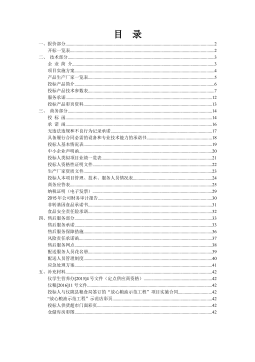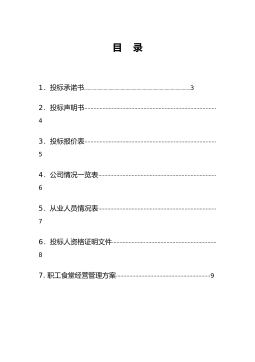制浆造纸设备企业M公司离职率的研究
VIP免费
制浆造纸设备企业 M公司离职率的研究
中文摘要
从国家发展改革委,工业和信息化部,国家林业局 2011 年 12 月 30 日发布的
《造纸工业“十二五”发展规划》中可以看到我国纸及纸板的生产量和消费量
均居世界第一位,制浆造纸工业在现代的国民经济生活中占有不可或缺的地位。
其中,造纸设备是制浆造纸工业的核心,设备投资占到造纸企业固定资产投资的
60%以上,世界大型制浆造纸装备供应仍处于垄断局面。多年来,世界上少数几
家主要制浆造纸装备供应商,依靠品牌优势、研发能力、精密制造以及强大的资
金实力和市场拓展能力,基本垄断了大型制浆造纸装备供应,这一局面短期内难
以改观。我国现已成为世界制浆造纸装备的主要市场,但大型制浆造纸装备主要
依赖进口,导致投资成本提高,阻碍了众多中小型制浆造纸企业装备大型化步伐
我国制浆造纸装备自主化水平亟需提高。目前制浆造纸学科已形成了一个以制浆
工艺、造纸工艺、机械装备、化学品、环境保护技术为核心领域的现代化应用科
学技术体系。随着国内经济的发展,市场对相关人才的竞争加剧,离职率也相应
上升。对制浆造纸设备企业离职率的研究,有利于保持制浆造纸行业人才的稳定
性,对国外制浆造纸技术的吸收和利用有着深远的意义,也对整个传统制造行业
的稳定发展有着深刻的影响。
文章研究了中国市场中的世界制浆造纸设备行业领导者 M 公司,运用了文献
分析法、问卷调查法、定性分析和定量分析相结合的方法,以及 SPSS 统计分析方
法。在研究过程中结合了组织行为学,人力资源管理等相关的知识理论,调研了
M 公司的中国员工的实际离职情况,针对 M 公司做了离职率内部可控因素的分析
探讨并提出相应的建议。
文章分为六个部分:第一部分绪论介绍了论文的背景和意义,讨论了离职率
的定义,并通过文献研究得出影响企业离职率的四个内部可控因素:工作生活质
量、薪酬管理、职业生涯管理及企业文化。并在此基础上介绍了文章的研究思路
方法及技术路线图。第二部分针对工作生活质量、薪酬管理、职业生涯管理和企
业文化展开相关理论论述,这四个内部可控因素在员工的试用期、磨合期、发展
期和稳定期分别起主要的影响作用。第三部分介绍了 M 公司的现状和员工离职率
状况,对目前离职率对企业发展所造成的影响。第四部分设计并展开针对 M 公司
在职人员离职倾向的TellUs 问卷调查,和离职人员的离职面谈问卷调查,结合调
查数据分析论证了工作生活质量、薪酬管理、职业生涯管理和企业文化这四个企
业可控因素分别在员工的试用期、磨合期、发展期和稳定期对离职率起了主要的
影响。第五部分基于上述的分析对 M 公司的离职率从工作生活质量、薪酬管理、
职业生涯管理和企业文化四个方面提出相应的建议。第六部分是结语。
关键词:制浆造纸设备企业 离职率 影响因素
ABSTRACT
From the Paper Industry’s Twelfth-Five Year Development Plan published by
the National Development and Reform Commission, Ministry of Industry and
Information, the State Forestry Administration on Dec. 30, 2011, Chinese paper and
paperboard production and consumption are No.1 in the world. The pulp and paper
industry in the national economy now occupies the indispensible status life. The pulp
and paper equipment is the core of the whole pulp and paper equipment industry, over
60% fixed assets investment is from the equipment for a pulp and paper company.
The large pulp and paper equipment supply in the world is still in the monopoly
situation. Several major pulp and paper equipment suppliers rely on brand advantages,
research and development ability, precision manufacturing and strong financial
strength and market development ability, monopolize the whole market of large pulp
and paper equipment supply for long time. It’s difficult to change this kind of
situation in short time. China has become the world's major pulp and paper equipment
market, but the large pulp and paper equipment mainly are from import, the related
cost investment increased, many small and medium-sized pulp and paper enterprise
lost the opportunities to develop the large-scale pulp and paper equipment in China.
Urgently needs to improve these abilities for civil pulp and paper equipment industry.
The pulp and paper subject currently has formed a pulp making process, the
papermaking technology, mechanical equipment, chemicals, environmental protection
technology as the core areas of modern science and technology application system.
Along with the domestic economy growing, Employees turnover rate is raising with
the growing talents compensation. The personal leaving research of this industry
helps maintain the stability of pulp and paper industry talents, make it more
significant for the civil pulp and paper industry to absorb the abroad advanced
technology for the development. Also it will have the profound effects to the
traditional industry.
The paper is based on the leader of pulp and paper equipment industry company
M in China market, applied the analysis method combined qualitative analysis and
quantitative analysis, questionnaire, and SPSS statistic methods. Combined with
Organizational Behavior, Human Resources Management, and related knowledge.
Studied the company M’s Chinese employees’ demission situation, analyzed
company M’s internal controllable factors of turnover rate and provide the relative
suggestions.
This paper is divided into six parts: the first part introduced the background of
the paper, significance, and the way of research, discussed the definition of turnover
rate and got the four company internal controllable influence factors of turnover rate
through literature study: Quality of Working Life, Reward Management, Career
Management and Company Culture. The second part is theory summary of the
turnover rate, preparation works for the research includes Quality of Working Life,
Reward Management, Career Management and Company Culture,pointed out these
four influence factors will separately affect the turnover rate of employees in four
periods: probation period, adjust period, development period and stable period . The
third part presented the company M’s situation including turnover rate and the pulp
and paper industry characteristics, and described the turnover rate study for the pulp
and paper equipment enterprise M, expounds the development impact to M which is
brought by the existing turnover rate. The fourth part takes company M’s leaving
status as the breakthrough point, unifies the related theories, deeply analyzed the four
company internal controllable influence factors: Quality of Working Life, Reward
Management, Career Management and Company Culture, and proved these four
factors affect the turnover rate separately in employees’ four period: probation period,
adjust period, development period and stable period. The fifth part provided the
constructive suggestions to company M according to the previous analysis. The sixth
part is the conclusion.
Key Word:The Pulp and Paper Manufacture, Turnover Rate,
Influence Factor
目 录
中文摘要
ABSTRACT
第一章 绪论...........................................................................................................1
1.1 研究背景及意义............................................................................................1
1.1.1 国外研究现状及分析...............................................................................2
1.1.2 国内研究现状及分析...............................................................................3
1.2 离职率的定义及讨论....................................................................................3
1.2.1 离职率的定义及意义...............................................................................3
1.2.2 离职率计算方式讨论...............................................................................5
1.3 文献综述........................................................................................................5
1.3.1 工作生活质量...........................................................................................5
1.3.2 薪酬管理...................................................................................................7
1.3.3 职业生涯管理...........................................................................................8
1.3.4 企业文化...................................................................................................8
1.4 研究思路,方法和技术路线图..................................................................12
1.4.1 研究思路,方法.....................................................................................12
1.4.2 技术路线图.............................................................................................12
第二章 离职率相关理论.....................................................................................14
2.1 工作生活质量..............................................................................................14
2.1.1 工作生活质量的定义及相关因素.........................................................14
2.1.2 工作生活质量的测量.............................................................................15
2.2 薪酬管理......................................................................................................16
2.2.1 薪酬管理的含义及意义.........................................................................16
2.2.2 薪酬管理和员工的满意度的关系.........................................................16
2.3 职业生涯管理..............................................................................................17
2.3.1 职业生涯管理的定义.............................................................................17
2.3.2 职业生涯管理的意义与特点.................................................................18
2.3.3 萨柏的职业生涯阶段理论.....................................................................18
2.4 企业文化......................................................................................................19
2.4.1 企业文化的定义.....................................................................................19
2.4.2 企业文化的凝聚力作用.........................................................................19
2.4.3 企业文化的激励功能.............................................................................20
2.5 四因素对离职率的递进式影响方式..........................................................20
第三章 制浆造纸设备企业 M公司离职率现状................................................22
3.1 行业离职率状况..........................................................................................22
3.2 M 公司离职率现状......................................................................................25
3.2.1 M 公司概述............................................................................................25
3.2.2 M 公司组织架构和人员结构................................................................25
3.2.3 M 公司人员离职情况............................................................................25
第四章 制浆造纸设备企业 M公司离职率的调查与分析................................30
4.1 M 公司问卷调查和数据收集......................................................................30
4.1.1 M 公司 TellUs 问卷调查........................................................................30
4.1.2 M 公司离职面谈问卷调查....................................................................31
4.2 M 公司离职率基于工作生活质量的分析..................................................33
4.2.1 M 公司工作生活质量状况....................................................................33
4.2.2 M 公司工作生活质量对离职率的影响及分析....................................34
4.3 M 公司离职率基于薪酬管理的分析..........................................................36
4.3.1 M 公司薪酬管理现状............................................................................36
4.3.2 M 公司薪酬管理对离职率的影响及分析............................................37
4.4 M 公司离职率基于职业生涯管理的研究分析..........................................40
4.4.1 M 公司职业生涯管理现状分析............................................................40
4.4.2 M 公司职业生涯管理对离职率的影响分析........................................40
4.5 M 公司离职率基于企业文化的分析..........................................................42
4.5.1 M 公司的协作性企业文化与矩阵式组织架构....................................42
4.5.2 M 公司协作型文化对公司离职率的影响及分析................................43
4.6 M 公司离职率研究分析小结......................................................................44
第五章 对M公司离职率控制的思考与建议....................................................46
5.1 M 公司离职状况..........................................................................................46
5.2 M 公司离职率控制的思考与建议..............................................................46
5.2.1 M 公司工作生活质量............................................................................46
5.2.2M 公司薪酬管理.....................................................................................48
5.2.3 M 公司职业生涯管理............................................................................50
5.2.4M 公司企业文化.....................................................................................52
第六章 结语.........................................................................................................55
6.1 本文的主要研究..........................................................................................55
6.2 本文研究的局限性......................................................................................56
6.2 今后研究的方向..........................................................................................56
附 录.......................................................................................................................57
附录一:TellUs 调查问卷..............................................................................57
附录二:上海分公司离职调查问卷..............................................................61
参考文献.................................................................................................................62
在读期间公开发表的论文和承担科研项目及取得成果.....................................64
致 谢.....................................................................................................................65
摘要:
展开>>
收起<<
制浆造纸设备企业M公司离职率的研究中文摘要从国家发展改革委,工业和信息化部,国家林业局2011年12月30日发布的《造纸工业“十二五”发展规划》中可以看到我国纸及纸板的生产量和消费量均居世界第一位,制浆造纸工业在现代的国民经济生活中占有不可或缺的地位。其中,造纸设备是制浆造纸工业的核心,设备投资占到造纸企业固定资产投资的60%以上,世界大型制浆造纸装备供应仍处于垄断局面。多年来,世界上少数几家主要制浆造纸装备供应商,依靠品牌优势、研发能力、精密制造以及强大的资金实力和市场拓展能力,基本垄断了大型制浆造纸装备供应,这一局面短期内难以改观。我国现已成为世界制浆造纸装备的主要市场,但大型制浆造纸装备...
相关推荐
-
跨境电商商业计划书模版VIP免费
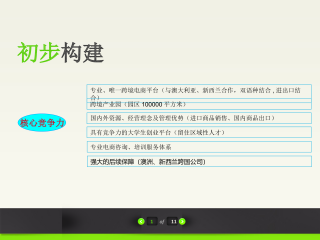
 2025-01-09 27
2025-01-09 27 -
跨境电商方案范文VIP免费
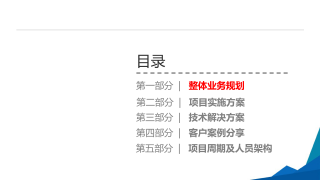
 2025-01-09 14
2025-01-09 14 -
创业计划书VIP免费
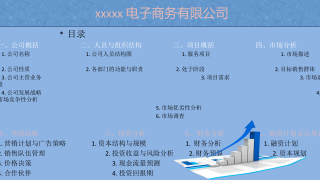
 2025-01-09 18
2025-01-09 18 -
xx生鲜APP计划书VIP免费

 2025-01-09 12
2025-01-09 12 -
跨境电商创业园商业计划书(盈利模式)VIP免费
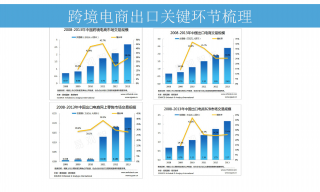
 2025-01-09 8
2025-01-09 8 -
跨境电商计划书VIP免费
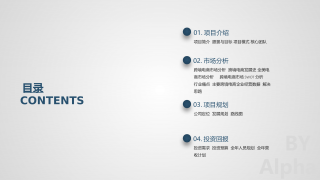
 2025-01-09 13
2025-01-09 13 -
绿色食品电商平台项目计划书VIP免费

 2025-01-09 22
2025-01-09 22 -
农产品电子商务商业计划书VIP免费

 2025-01-09 9
2025-01-09 9 -
农村电商平台商业计划书VIP免费
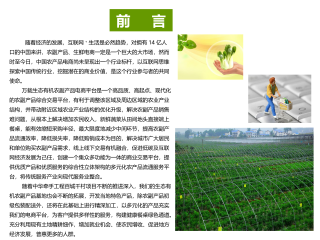
 2025-01-09 13
2025-01-09 13 -
生鲜商城平台商业计划书VIP免费
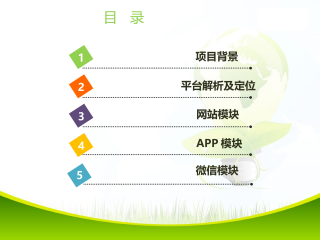
 2025-01-09 21
2025-01-09 21
作者:刘畅
分类:高等教育资料
价格:15积分
属性:70 页
大小:1.29MB
格式:DOC
时间:2024-11-07


